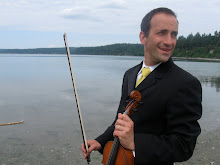Dear Families,
The forecast is for sunnier and warmer weather on Thursday. Our festival is outside, and I am setting the Butterfly Room up for a summer puppet show (to which I'll invite everyone at 9:30am). To preserve a sense of wonder and magic, the Butterfly Room will remain closed until the time for the puppet show; if you come as an 8:30am earlybird, be prepared that the weather may be cool.
Whenever you arrive, feel free to start dyeing silks right away. Because Brazilwood sawdust was unavailable, I am offering 3 dyes:
Osage Orange sawdust -- which generally produces yellow
Madder Root -- which produces orangey red or reddish orange
Annato -- another reddish dye in case the Madder is acting particularly orange
A challenge and blessing of plant dyes is that they produce slightly different results on different occasions.
Because I want the process to be more tangible, I choose not to use dye sacks or strainers; the sawdust or bits of roots are floating in the pots, and you may have to pick them off once you take your silk out. Although someone seeking a "perfect" silk may find minor flaws with this method (idyes and rit dyes and other synthetics do a much better job of producing absolute uniformity if that is what you seek), parents and children in past years have found the process and results very satisfying.
Although the dye pots themselves are hot, I will have tubs for rinsing. Once the silk has entered the cool water, children tend to love to help with rinsing.
Brief process description
1) Put your silk in the first color for 5 seconds to 5 minutes (observe how others are coming out).
2) As best you can, allow the liquid to drip back into the pot as you take out your silk.
3) Rinse in cold water.
4) Hang to dry (and keep track of your silks' location).
5) If you want to dye in more than one color (stripes, tie dye, yellow sun in the middle with a red exterior, and soforth), please start with the osage orange yellow and rinse between colors. This will keep the colors as true as possible for others.
If you preordered extra silks, I will have them set aside for you. Because I have not submitted an invoice yet for reimbursement, it is easiest for you to pay me directly with cash or a check to William Dolde, and I will deduct this from what I ask back from the school (rather than flooding our business office with a bunch of checks).
It is probable that we will have extra silks even if you did not preorder. After I get a sense of how many visitors we have, I will release extra silks.
With warmth and light,
William Geoffrey Dolde

